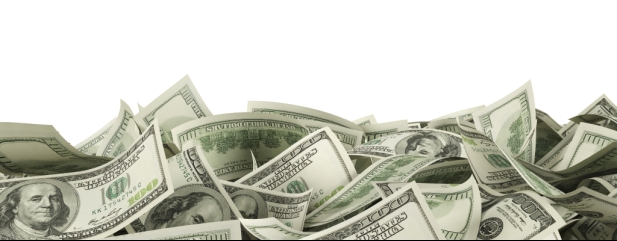Archived article
Please note that tax, investment, pension and ISA rules can change and the information and any views contained in this article may now be inaccurate.
Why investors in US shares may have to lower their growth expectations

With investors’ attention fixed on inflation and interest rates an economist at the US Federal Reserve argues investors should prepare themselves for a sharp drop in net income growth over coming decades.
A new research paper by Michael Smolyansky based on data from Compustat shows that net income has grown at 3.8% a year, roughly double the 2% rate of operating earnings growth over the last 30 years.
For the uninitiated, net income is calculated after deducting interest expenses and taxes from operating profit.
Smolyansky points out that interest expenses and taxes have declined precipitously as a share of operating income from 54% in 1989 to just 27% in 2019. The economist makes the case that the ‘Golden Era’ is unlikely to be repeated over the next 30 years.
The implication is that net profit growth could halve over the coming decades moving back towards the long-term operating income growth average of 2%.
The big decline in official interest rates since the 1980s has coincided with a commensurate fall in corporate borrowing costs. The aggregate corporate rate of interest expense has fallen from 12% in 1982 to around 3% according to Compustat.
With inflation proving stickier than the Fed would like, current 10-year treasury yields of around 4% could remain elevated for some time.
Economist Mohamad A. El-Erian argues that structural changes to global supply chains brought about by the pandemic and the war in Ukraine imply higher core inflation as global businesses build-in more operational flexibility and costs. This would imply higher interest rates.
Corporate tax rates averaged 44% between 1962 and 1982. By the end of Ronald Reagan’s second term as President in 1989 the effective rate of corporate tax had declined by 10% to 34%.
Passing of the Jobs Cuts and Tax Act of 2017 saw the rate decline further from 23% to 15% in 2019 which may prove a floor argues Smolyansky.
The Inflation Reduction Act of 2022 made 15% a minimum while a huge increase in the US deficit over the last three years means Congress is unlikely to approve further debt-funded tax cuts.
Supporting the argument, credit rating agency Fitch downgraded the US sovereign credit rating from triple A on 2 August.
The bottom line is that investors have become accustomed to a rate of net income growth which looks extremely difficult to repeat. Meanwhile the trailing PE (price to earnings) ratio for the S&P 500 excluding financials doubled between 1989, when it stood at 11.8 times, to 20.3 times by 2019 and is even more elevated today.
Important information:
These articles are provided by Shares magazine which is published by AJ Bell Media, a part of AJ Bell. Shares is not written by AJ Bell.
Shares is provided for your general information and use and is not a personal recommendation to invest. It is not intended to be relied upon by you in making or not making any investment decisions. The investments referred to in these articles will not be suitable for all investors. If in doubt please seek appropriate independent financial advice.
Investors acting on the information in these articles do so at their own risk and AJ Bell Media and its staff do not accept liability for losses suffered by investors as a result of their investment decisions.
Issue contents
Feature
Great Ideas
News
- Pod Point powers down but hopes change at the top can recharge the shares
- Top fund managers continue to back the UK consumer amid record wage growth
- Two potential UK winners from the Tapestry-Capri luxury mega-merger
- Big breakthroughs on obesity and Alzheimer's make Eli Lilly world’s largest pharma firm
- Fresh ‘Spot The Dog’ research reveals big increase in funds failing to deliver for investors

 magazine
magazine








